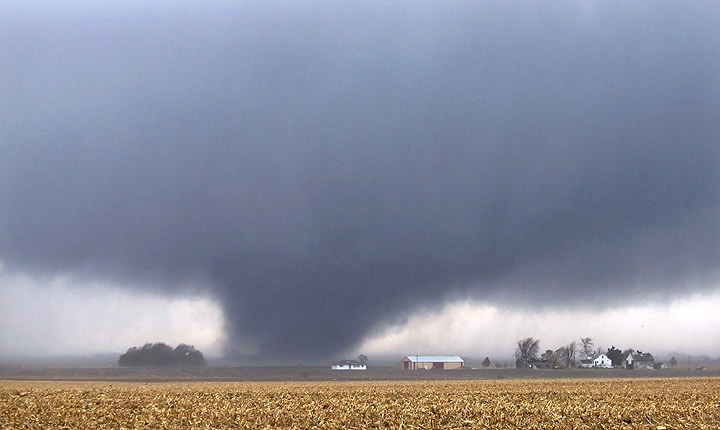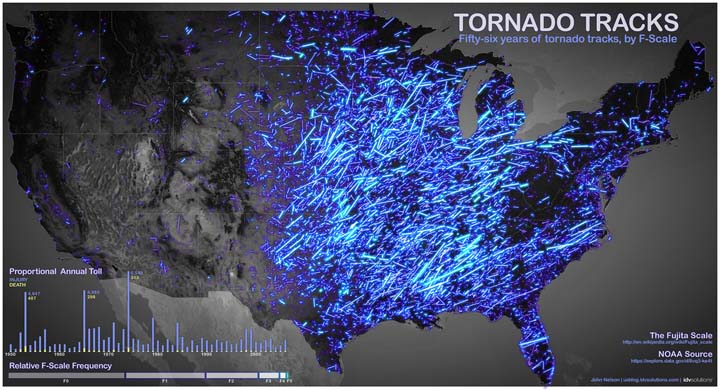TORONTO – It may be cold, but one thing that our neighbours to the south may be grateful for this winter is fewer tornadoes.

The United States, on average, sees about 1,200 to 1,300 tornadoes each year. Due to their climate, unlike Canada, they don’t have a particular tornado season, but rather a high time and a low time. Winter and spring, of course, are in the low part of the season.
Still, the past two years, the U.S. has experienced over 70 tornadoes in the month of January. This January? Only 4.

“Part of the reason…we’ve seen very cold conditions across much of the continent,” said Greg Carbin, Warning Co-ordinating Meteorologist at the National Oceanic and Atmospheric Administration. “And this pattern that we’ve been in this winter has been somewhat unusual…in about 20 years or so.”
Carbin said that he expects that the country will probably see one of the coldest winters its seen in a couple of decades.
Though cold air is needed to help fuel thunderstorms and tornadoes, this level of cold acts as a suppressant.
READ MORE: Top 10 deadliest tornadoes in U.S.
“When we look at the ingredient necessary for tornado formation, we do need cold. We also need a contrast in air masses, but that’s not all we need. We need warm moist air.”
But that warm moist air hasn’t been pulled up to the central plains.
February looks to continue the downward trend of winter tornadoes. As of Feb. 26, there had only been 37 reported, with all of them occurring over two days, Feb. 20 and 21.
“In order for tornado events to occur in the months of January/February, you need a very active jet stream, dynamic weather systems, storm systems. And we’ve had some of those. But you need them to sort of track between the cold air that exists in the polar regions and the sub-Arctic regions, and the warm, moist air that exists in the Gulf Coast and the Caribbean. Because the system has to draw warm, moist air into it in order to fuel thunderstorm development.”
Though the jet stream has been active, it hasn’t had access to the warm air.
But as the spring continues, there will likely be an increase in tornadoes. Still, it’s difficult to say at this point. Even last year, the 2013 season got off to a slow start, but picked up dramatically in May, traditionally the busiest month in the U.S. for tornadoes. Two deadly tornadoes occurred within a week of each other.
In the short-term, it looks like the cold is going to persist. There is nothing to show that it will shift dramatically. However, that doesn’t mean that as spring rolls in that there won’t be a dramatic increase in tornadoes. It takes just one outbreak in the U.S. where dozens of tornadoes can be reported.
Aside from the cold air and the jet stream, there are numerous climatological factors that contribute to amount of tornadoes the U.S. sees each year, including El-Nino and La Nina events, where ocean temperatures are either warmer or cooler.
“I guess the phrase that could be used to describe that is that there is a large amount of variability in the numbers… We see tremendous variability or volatility with respect to these events. And that makes it very difficult to do any long-range prediction… There should be an increase as we move to spring, but the magnitude of that increase is somewhat uncertain. And some years are worse than others.”



Comments